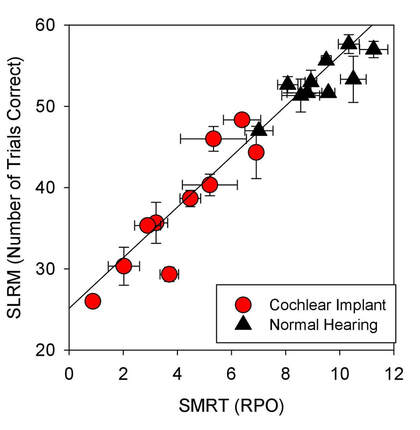|
The SLRM (Landsberger et al., in press) is a measure of spectral resolution that was designed to be implemented via a CD-player. This allows clinics that do not have computers in their test booths to conduct the test. It is a new variant of our previous test (SMRT; Aronoff and Landsberger, 2013) which, due to its use of adaptive tracks, required a computer for testing. Scores on the SLRM are highly correlated with the SLRM (r = 0.97), suggesting that SLRM can be used interchangeably with SMRT.
The SMRT correlates with speech measures (Holden et al., 2016; Lawler et al., 2017; Zhou, 2017). |
Download SLRM
Note, we are presently working on a system where a SLRM CD can be purchased for a nominal fee if you are unable to burn your own. However, as the goal is easy distribution (and not profit) we strongly encourage that you burn your own CD or ask another clinic/lab to copy their SLRM CD for you before trying to order a CD.
Instructions on how to make SLRM CDMaking a CD from Audio Files
Download the CD-Image from the above link or here. After extracting the contents of the zip file into a folder, you need to record the files to two CDs. Inside the zip file, there are two folders, one for each SLRM CD. CD1 contains lists 1-10, a practice list, and a calibration noise and tone. CD2 contains lists 11-20 , a practice list, and a calibration noise and tone. You can record each CD as an audio CD using your favorite software to make audio CDs. Be sure to keep the correct track order. Additionally, each CD folder has a ".cue" file. We suggest that you record the CD using software that supports "cue" sheets. By using the .cue file, the CD Recording software will know exactly how to layout and name each of the audio tracks correctly. Software that supports the .CUE format: Windows: CDBurnerXP, or IMGBurn. Mac:Disco. NEVER MAKE MP3 OR OTHER COMPRESSED AUDIO FILES FROM THE SLRM STIMULI. |


